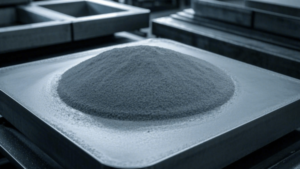Principle of passivation
The passivation happens because the metal surface reacts chemically with the environment medium to form a thick oxide film. This film has these features:
Insolubility: The oxide film can’t dissolve in water and other corrosive substances.
Density: The oxide film has a thick structure. It can stop oxygen and moisture from getting through.
Self-repairing: When the oxide film gets damaged, it can fix itself.
Passivation method
Chemical passivation: Put the metal in an oxidizing acid or alkali liquid. Then, an oxide film forms on the metal surface. For example, put stainless steel in nitric acid to passivate it.
Electrochemical passivation: Use electrochemical ideas. An oxide film forms on the metal surface. For example, anodizing is an electrochemical passivation way.

The role of passivation
Improve corrosion resistance: The passivation film can stop the metal from touching the outside environment substances. So, it makes the metal more corrosion-resistant.
Improve appearance: The passivation film can make the metal surface shiny and smooth. It also makes the product’s surface quality better.
Enhance the adhesion of the paint film: The passivation film can make the paint stick better to the metal base. It also makes the coating last longer.
Improve wear resistance: Some passivation films can make the metal surface harder and more wear – resistant.
Application of passivation treatment
Passivation treatment is used a lot in industrial production. For example:
Brass passivation: Brass products usually need to be passivated before use to make them more corrosion – resistant.
Aluminum alloy passivation: Aluminum alloy products can get harder and more wear – resistant on the surface by passivation treatment.
Titanium alloy passivation: Titanium alloy passivation can make it more biocompatible. It’s used a lot in medical devices.

Precautions for passivation treatment
Choose the passivation solution: Different metal materials need different passivation solutions to get the best passivation result.
Control the passivation time: If the passivation time is too short or too long, it will affect the passivation result.
Clean after passivation: After passivation, clean the workpiece surface well to get rid of the left – over passivation liquid.
Development trend of passivation treatment
As science and technology keep getting better, passivation treatment technology is also changing. In the future, passivation treatment will change in these ways:
Green passivation: Develop a more eco-friendly passivation process to pollute the environment less.
Intelligent passivation: Use automation and smart technology to make the passivation process faster and better.
New passivation materials: Develop new passivation to meet the needs of different materials and using environments.
Summary
Passivation treatment is an important surface treatment technology. Making a thick oxide film on the metal surface can make the metal more corrosion-resistant, wear-resistant, and so on. As science and technology keep improving, passivation technology will be used more and more.











